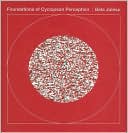

 |

|

The average rating for Foundations of Cyclopean Perception based on 2 reviews is 5 stars.
Review # 1 was written on 2020-04-08 00:00:00 Masayoshi Itoh Masayoshi ItohA well-documented book that explores our relation with one of the most dangerous poisons: Arsenic. The book explores three modes of arsenic poisoning: its use as a murder weapon (arsenic-based poison) as it has been used until the late nineteenth century, its lethal effect as an environmental poison (the mine Devon Great Consols situated in the Devonshire's Tamar Valley (the United Kingdom) in the late 19th century as well as South-East Asia to limit to these two examples), and its industrial use including as a cosmetic ingredient. I was more interested in the lethal effect as an environmental poison and its territorial distribution at the scale of the Earth. The following will be focused on this issue. The book starts with Bangladesh and its poisoning struggle with arsenic. Arsenic is infecting Bangladesh and India's water (drinking water) and soil. The most affected areas are poor villages with poor or lack of basic infrastructure. Arsenic, as the author notes, causes skin diseases including skin cancers, black foot (or peripheral vascular disease). Arsenic poisoning can be found at the planetary scale including Chile, California, South-West England (Devonshire), Dominica, El Salvador, Southern part of Japan (Kyushu), Ghana (Ashanti region), Zimbabwe, China, Hungary through aquifers, mining. As another example is the estuarine regions of South-East Asia: Andrew Meharg writes: "Enormous populations of the world's poorest and most malnourished people crowd into these fertile plains. (…) [A]rsenic has now been found further and further up with the course of the Ganges. In the last couple of years the Indian state of Bihar in the Middle Ganga Plain was found to have aquifers with high levels of arsenic. Early estimates suggest that 200,000 people live in the area. The situation is worse further up the Ganges, with an estimated 10 million residents of the Terai Plain, Nepal, now thought to be at risk, with many showing signs of arsenicosis." Due to the lack of basic infrastructure I mentioned earlier, drinking water is distributed via tubewells. And these tubewells facilitate distribution and circulation of arsenic through the region. "Tubewells were only sunk here in the mid-1990s ' arsenicosis has not yet been detected in the population." And I don't mention natural infrastructure such as rivers. Arsenic is an hyperobject, to borrow this concept from the philosopher Tim Morton, with a lifetime different from humans. Arsenic will be lasting far beyond human lifetime. Furthermore, as an hyperobject, humans and arsenic are spatially interrelated via natural features, water, soil and air. As the book argues, we should examine its current patterns of distribution to understand its immense impacts at the scale of the planet. With arsenic we have another look at the globalizing environment: we are "aware of the worldness of the world" (Morton, 2012). I discovered this book through the ongoing read of Forensis. The Architecture of Public Truth, edited by Forensic Architecture (Sternberg Press, 2014), more specifically through Nabil Ahmed's essay 'The Toxic House'. I warmly recommend to read this book Venomous Earth. The reader of Tim Morton's Hyperobject, Levi Bryant's Onto-Cartography, or Forensis. The Architecture of Public Truth, to limit to these three examples, will find in Mehard's book an example of our dangerous cohabitation with these by-products, these hyperobjects: here arsenic, there nuclear waste, there again oil spills. |
Review # 2 was written on 2008-11-11 00:00:00 Robbie Ludlow Robbie LudlowThe book opens with the mass poisoning of thousands of people in Bangladesh by drinking water contaminated with arsenic. This book has a very important current environmental message for all of us because environmental arsenic is not just a problem facing Bangladesh. There is a USGS map on page 161 showing the states in the U.S. where acquifers used for drinking water contain dangerously high levels of arsenic. As a cancer patient, I have often wondered why I keep meeting people who are being treated for cancer but are in none of the high-risk groups. I was surprised to read in this book that years of exposure to water contaminated with non-lethal levels of arsenic causes lung cancer. Unfortunately, this surprising information is floating around in a hodge-podge of history and unrelated anecdotes. I would have assumed that a major publishing company like Macmillan still employed editors in 2005 but, apparently, I was wrong. The author is obviously extremely knowledgeable, and the separate topics he addresses are all interesting but the book is totally disjointed. I imagine that the author wrote a long academic article addressing the arsenic contaminated well water in Bangladesh, a medium length exposé on the history and ethics of William Morris & Company. Someone remarked "You have almost enough material for a book." The author tossed in a short popular article on the worldwide problem of environmental arsenic, and several short sensational anecdotes about murders committed using arsenic and mailed the separate articles to Macmillan. His publisher dropped the articles on the floor, told an intern to put them back in order and then published them. |
CAN'T FIND WHAT YOU'RE LOOKING FOR? CLICK HERE!!!